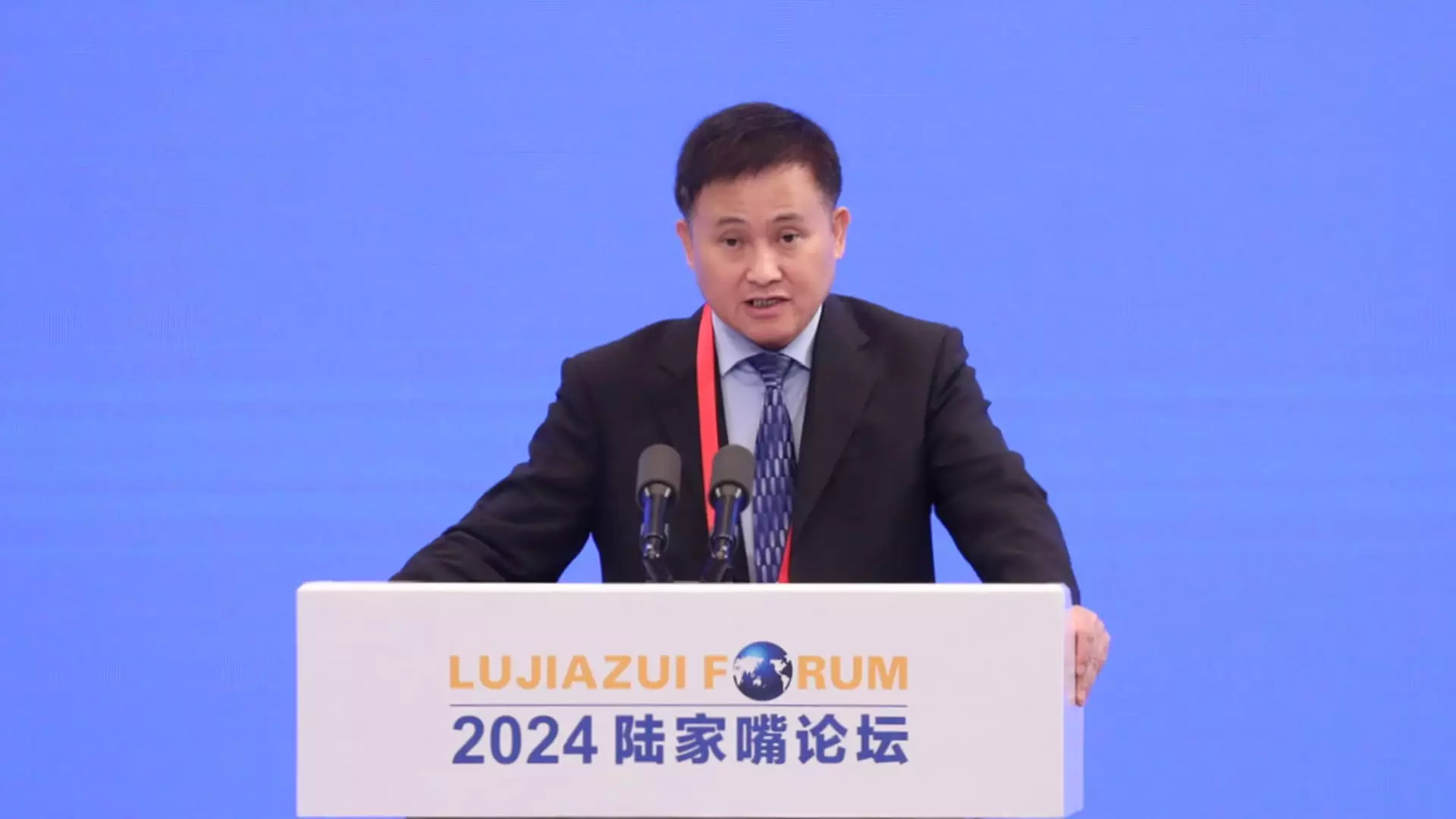In the face of growing economic challenges and persistent deflationary pressure, the People’s Bank of China (PBOC) has signaled its intent to implement monetary easing measures. During a recent press conference, PBOC Governor Pan Gongsheng announced a reduction in the reserve requirement ratio (RRR) by 50 basis points, which will allow banks to maintain less cash on hand. This move is intended to stimulate the economy by providing banks with more liquidity, ultimately fostering lending and investment. However, the specifics surrounding the timing and potential further cuts in monetary policy remain somewhat ambiguous, indicating a cautious yet proactive approach by the central bank.
The reduction in the RRR is particularly significant as it is a key tool for the PBOC in managing monetary policy. By lowering the reserve requirements, banks will have increased flexibility in lending to businesses and households, which is essential for economic growth. Notably, Pan mentioned that a second cut could occur by year’s end, ranging from 0.25 to 0.5 basis points. This potential strategy appears to be in response to the recent economic data reflecting sluggish growth in various sectors, including real estate, which is a critical pillar of the Chinese economy.
The decision to cut the RRR indicates a broader strategy aimed at alleviating financial tensions within China’s banking system. Such measures typically become more urgent during periods of economic downturn, and the current situation in China reflects a need for effective policy interventions.
In conjunction with the RRR cut, Governor Pan also announced a reduction in the 7-day repo rate by 0.2 percentage points. This change is relevant as it directly influences short-term borrowing rates, which can further stimulate economic activity. The interplay between RRR and interest rates is crucial—as banks gain access to additional funds via a lowered reserve requirement, they are more likely to lower interest rates on loans, making it cheaper for consumers and businesses to borrow.
However, while these adjustments aim to promote lending and consumer spending, the overall sentiment still hinges on market confidence. China’s economy has experienced a slowdown, characterized by weak consumer confidence and a significant real estate slump. Economists have increasingly called for aggressive stimulus measures to revitalize the economy.
Interestingly, Pan’s announcements follow recent interest rate cuts by the U.S. Federal Reserve, signaling a global trend toward monetary easing to combat slowing economic growth. This context provides the PBOC with additional rationale to adopt similar measures, as a coordinated easing could offset potential capital outflows or depreciation of the Chinese yuan. The PBOC operates under a different framework than the Fed; its strategy involves a variety of rates and measures, as opposed to a singular focus on a benchmark interest rate.
The PBOC’s decision to maintain the loan prime rate unchanged amidst widening economic challenges has raised eyebrows among economists. This benchmark, which affects corporate and household borrowing, has been a focal point for understanding the accessibility of credit within the economy. The lack of adjustments here might indicate complex internal calculations regarding how to balance stimulating growth while managing inflationary pressures.
Looking ahead, the PBOC’s communication strategies have unveiled a tentative but clear path towards a more accommodative monetary stance. Pan has promised that future policy announcements will be transparent and timely, which is crucial for establishing market confidence. However, the lack of specificity regarding the timing of further cuts poses a challenge for businesses and investors seeking clarity amid uncertainty.
Currently, the macroeconomic environment remains precarious, and while the PBOC has tools at its disposal to stimulate growth—such as further RRR cuts and adjustments to interest rates—the effectiveness of these measures will heavily depend on other underlying factors, including government fiscal policies and overall consumer sentiment. As China navigates these challenges, the global economic landscape will also play a significant role in shaping domestic policy outcomes.
The PBOC’s recent announcements reflect necessary but cautious steps towards addressing significant economic headwinds. The interplay between reserve requirement adjustments and interest rate cuts serves as a balancing act aimed at invigorating the economy while remaining alert to potential inflationary risks. As China ventures down this path, the necessity for cohesive and comprehensive monetary and fiscal policies will be paramount to ensure a sustainable economic recovery in the long term. Ultimately, staying tuned for the PBOC’s future policy directions will be vital for stakeholders both within and outside of China’s borders.

Leave a Reply